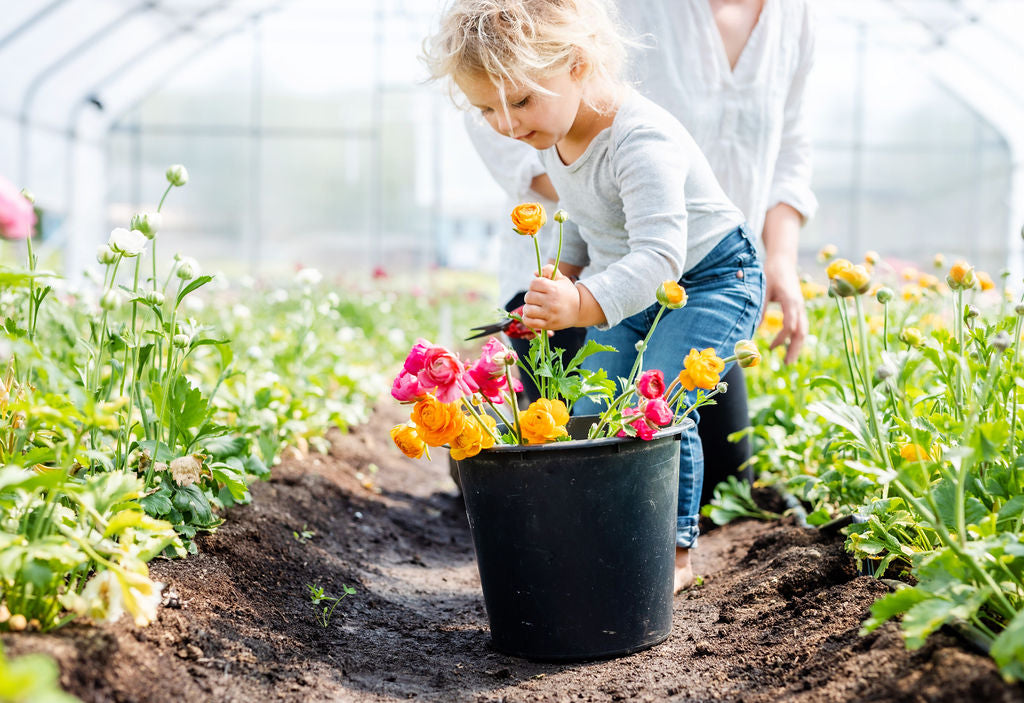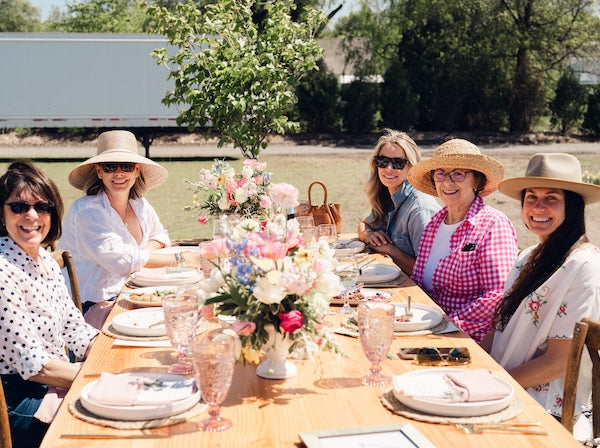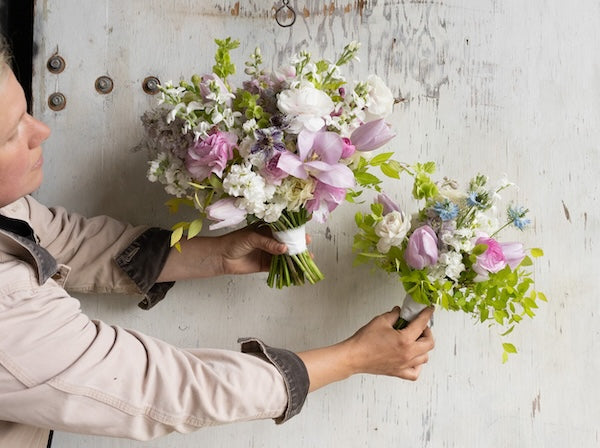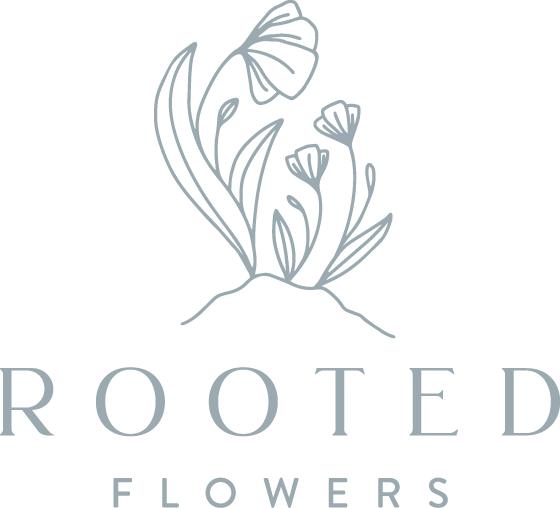- Book An Event
- FLOWERS & GIFTS
- GARDEN SHOP
- EXPERIENCES
- BLOG
- ABOUT
- Log in
How To Grow Anemone & Ranunculus
October 26, 2021 4 Comments



 To get them started, soak for about 4 hours before planting. Corms arrive dry & shriveled. Once hydrated, they will double in size. This will allow for them to come into growth much more quickly. Excessive soaking will make them rot.
To get them started, soak for about 4 hours before planting. Corms arrive dry & shriveled. Once hydrated, they will double in size. This will allow for them to come into growth much more quickly. Excessive soaking will make them rot.Pro tip! Pre-sprout or pre-plant your corms inside while the chance of frost still exists outdoors. Any small pot with a drain hole at the bottom will do the trick (like a yogurt container with a puncture hole). We use the trays as seen below because we grow in larger numbers, see bottom of article for what we use.

 Place a general all-purpose potting mix into the bottom of your container, then corm, allowing for 2 inches of potting mix to top off the corm. Keep potting mix moist but not soggy. Blooms will show a few weeks earlier. Pre-sprouting them in late February or by the first day of spring can give a jump start for when planting is ready outdoors.
Place a general all-purpose potting mix into the bottom of your container, then corm, allowing for 2 inches of potting mix to top off the corm. Keep potting mix moist but not soggy. Blooms will show a few weeks earlier. Pre-sprouting them in late February or by the first day of spring can give a jump start for when planting is ready outdoors.




 A general practice is to apply 2-3 inches layer of compost and organic fertilizer into the soil. This will help to replenish the nutrients extracted during the growing season.
A general practice is to apply 2-3 inches layer of compost and organic fertilizer into the soil. This will help to replenish the nutrients extracted during the growing season. Harvest when you see full color. The above picture shows the angle that flowers should be cut for optimum hydration.
Harvest when you see full color. The above picture shows the angle that flowers should be cut for optimum hydration. 

For supplies, here's a list of everything we use to get started:
We hope you enjoy the fun, beauty and grandeur in your garden!
Rooted Flowers only lists companies and products that we love, use, and recommend. All opinions expressed here are our own and Rooted Flowers does not offer sponsored content or accept money for editorial reviews. If you buy something using the retail links in this post, Rooted Flowers may receive a small commission. Thank you for your support!
4 Responses
Jane Niehaus
January 12, 2023
Very helpful, thank you! And you have the cutest helper.
Crystal
November 12, 2021
Didn’t know about soaking corms for about 4 hours prior to planting…thinking I’m seeing why I don’t have a whole lot of luck with those type of plants (especially every time I buy strawberry & asparagus roots!).
Karly
November 12, 2021
Newbie home gardener here but I’m excited to try – I know you said earlier in the blog that you treat them like annuals due to the weather, so when the season is over and I pull them and dry them, can I reuse them the following year? I’m assuming yes but just want to make sure. No question is a bad one, right?? haha – thanks!
If your comment doesn’t show up right away, don't fret! We have a spam filter that requires we approve most comments before they are published.
Unable to post at this time.
Also in Farm Journal

Rooted Flowers Holiday Gift Guide 2025
December 11, 2025
As another season comes to a close here at the farm, I’ve been reflecting on how much Rooted Flowers has grown and evolved. Each year feels like a whirlwind of planting, tending, harvesting, and planning for what comes next. With so much happening behind the scenes, I wanted to take a moment to gather everything we’re offering this holiday season in one place.

Bloom & Brunch: A Mother’s Day to Remember
May 29, 2025
This past Motherʼs Day, we opened the gates to Rooted Flowers for our very first Bloom & Brunch, and what unfolded felt like something out of a dream. After weeks of gray skies and unpredictable spring weather, the sun showed up right on cue—and so did all of you.

A Pastel Spring Wedding at Valley View Farm
May 27, 2025
This past weekend, we had the pleasure of designing wedding florals for a stunning celebration at Valley View Farm in Haydenville, MA. From seed to centerpiece, every flower was grown right here on our farm in Agawam, MA—a full farm-to-table floral experience for a couple who wanted something meaningful, local, and naturally beautiful.
Quick Links
Follow Us
We a family-run speciality cut flower farm growing in the Pioneer Valley of Western Massachusetts.
Our self-serve farmstand is located at 501 Shoemaker Ln, Agawam, MA 01001. We are open everyday with a fresh restock at 10 am.
Find us on Google Maps or Apple Maps
News & Updates
Sign Up For Our Newsletter
© 2025 Rooted Flowers. © COPYRIGHT ROOTED FLOWERS LLC 2024


Barbara
November 06, 2023
Thank you for this helpful post. I just received the ranunculus corms I purchased from you. Looking forward to starting them around Valentines Day next year (I am in Shelburne, MA).